| | | | January 2023  Every day without fail, at 5:00 pm Eastern Time, Taps is sounded at the National World War I Memorial in Washington, DC, honoring those who perished in the 'War That Changed the World' and all who have served in the armed forces of the United States. The Daily Taps program now provides a unique opportunity to dedicate a livestreamed sounding of Taps in honor of a special person of your choice, while supporting the important work of the Doughboy Foundation. Choose a day, or even establish this honor on a date in perpetuity. (In the image above, Taps was sponsored in honor of members of five families on December 25, 2022.) Click on the image to learn more about how you can sponsor Daily Taps to honor a loved veteran. | | World War I Navy Nurse Namesake for New Destroyer Continues to Inspire a Century On County Clerk Seeks To Return Unclaimed Historic WWI Medals to Vets' Families  Abraham Lincoln and Woodrow Wilson are two presidents who led the nation in fighting for a united democracy in wars of unexpected magnitude and duration with high ideals, and they each oversaw many successes. But both presidents addressed the issue of race in ways that had serious consequences – intended and unintended – and left unfinished business. The National World War I Museum and Memorial explores these matters in "The Unfinished Business of Democracy" on Tuesday, February 21. Click here to read more about this important program, and learn how to attend the event in person or virtually. |  Florida author Rebecca J. Johnston will speak about World War I, Floridians returning from the war, prohibition, the Bonus Army, the Labor Day Hurricane of 1935, and the process of writing these topics into her novel, "Not to Keep" on Saturday, January 21 @ 4:00 pm – 5:30 pm, at the Matheson History Museum in Gainesville, FL. Registration for in-person attendance can be found here, and registration for online Zoom attendance can be found here. Click here to learn more about this new book that follows the lives of five young friends as they grow from their shared childhood in North Central Florida through their experiences in World War One, and their return home from war. | 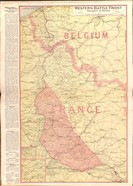 Prepping for an October event at the Library of Congress named ""Explore the Depths of the Geography and Map Division," LOC Reference Specialist Cynthia Smith was searching for maps to display when she encountered a unique atlas titled The Deseret News Atlas printed in 1914 for the Deseret News Publishing Company in Salt Lake City. Intrigued by some of the charts in the volume, she looked further and encountered a remarkable document: a World War I atlas titled The World's Greatest War, first edition printed in 1914, a more detailed edition was printed in 1917. Click here to read more about this amazing World War I atlas, and learn just how rare a document it is (hint: very rare indeed). | 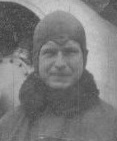 A man is only missing if he is forgotten. Our Doughboy MIA this month is First Lieutenant Charles Bowcock Sands of the 27th Aero Squadron. Lieutenant Sands was born on 7 February 1895 in Richmond, Virginia in two of the oldest families in Virginia. Lieutenant Sand's paternal grandfather, Alexander Hamilton Sands Sr., was a prominent lawyer and Judge Advocate General of the Confederate Army. His maternal great-grandfather, John Jacob Bowcock, had been a Colonel in the Confederate Army. His mother, Mary Stuart Bowcock, could trace his roots back to one of the first settlers of Virginia. Lieutenant Sand's father, Conway R. Sands Sr., was a prominent lawyer in Richmond and a State Senator for Henrico County to the Commonwealth of Virginia's State Legislature. Not much is known about Lieutenant Sands early life. What is known is that before the war Charles Sands attended the University of Richmond as a student while working as a clerk for the First National Bank of Richmond and then as a clerk with TW Wood & Sons, an agricultural company. At the beginning of America declaring war on Germany Charles B Sands was accepted into the Air Service Signal Corp's as an aviator trainee. Charles Sands completed the U.S. Army School of Military Aeronautics (Ground School) at Cornell University, New York and then sent to Selfridge Field in Mount Clemens, Michigan for Primary Flight Training. Upon completion he was commissioned as a First Lieutenant Reserve Aviator in the Air Service and on 4 December 1917 boarded the SS Northland, sailing from Philadelphia to France as part of the 10th Aero Squadron. Once in France Lieutenant Sands was sent to Advance Flight Training and Gunner School. The training, the poor weather in France, and the lack of training aircraft would take up the first half of his time in France in 1918. On 23 July 1918 Lieutenant Sands was assigned to the 27th Aero Squadron as a Pursuit Pilot. Unfortunately, on his third flight over enemy lines he would be shot down. It was the worst day in the 27th Aero Squadron's history losing six pilots. Three would be prisoners of war, one would be killed, and Lieutenant Sands and First Lieutenant Jason Hunt would be missing in action. | 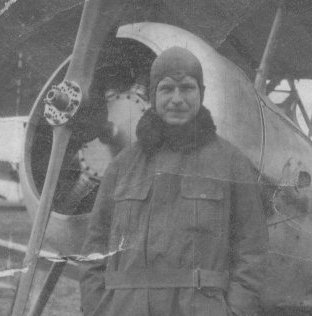 On 1 August 1918 the 27th Aero Squadron was ordered to provide high protection cover for a Salmson 2A2 tasked to take photographs of enemy activity and positions in the vicinity of Fismes, France. Seven Nieuport 28's of the 27th Aero Squadron were sent out and linked up with the Salmson crew at 7:40 in the morning. As the photographic aircraft conducted its mission eight enemy Fokkers attacked the Nieuports of the 27th Aero Squadron from above and behind. First Lieutenant Jerry Cox Vasconcells reported "At the very beginning of the fight I observed the last Nieuport on the right of my formation go down in a spin. I do not know whether he was out of control, but apparently so. I later learned that Lt. Sands was in this position." A few other pilots saw a Nieuport go down but that was the last anyone would ever see of Lieutenant Charles Bowcock Sands. | Well after the war Lieutenant Sands uncle, Alexander H Sands Jr., received a letter from a records clerk in Germany named Fred Meinke who worked for the German Imperial Archives in Potsdam. In the letter Mr. Meinke provided a map of the area LT Sands and the 27th Aero Squadron would have operated. Indicated on the map were thirteen different locations of Allied aircraft that went down during the month of August 1918 in that area. Of these he indicated number eleven as the likely location for Lieutenant Sand's aircraft and remains. Mr. Meinke stated that Lieutenant Sands was shot down by Vizefeldwebel (Vice-Sergeant) F. Hemmer of Jasta 6. However, this was the wrong German pilot as Hemmer shot down Lieutenant Whiton of the 27th Aero Squadron and was captured. It is understood that Lieutenant Sands was shot down by the famous Leutnant Ernst Udet for his 41st victory. Udet would finish the war as Germany's highest surviving ace with 62 victories. The Graves Registration Service received the map information and searched the area thoroughly but was unable to find Lieutenant Sands' remains. Using the map they were able to locate the remains of an unknown American Aviator, six and half miles from the location where it was thought Lieutenant Sands went down. At the time the only way to confirm the identity of a set of remains was through dental records. Although the Graves Registration Service felt these unknown remains were those of Lieutenant Sands they had no ability to identify this positively. Lieutenant Sands had no known dental records either in the United States or with the American military. The Unknown's dental information did not match any other American Aviator who was missing in the area. The Unknown remains were designated U-1000 and were buried as an "Unknown" in the Aisne-Marne American Military Cemetery, near the village of Belleau, France, in Plot B, Row 13, Grave 57.  Doughboy MIA has an Aviation Team dedicated to locating missing in action American Aviators of World War One. Lieutenant Sands' MIA case is actively being researched by this team with the goal of finding and repatriating his remains. Until that is accomplished, First Lieutenant Charles Bowcock Sands is listed on the Tablets of the Missing, Aisne-Marne American Military Cemetery and has a cenotaph alongside his mother and father in the Hollywood Cemetery in Richmond, Virginia. | Would you like to be involved with solving these cases? You can! Make a tax deductible donation to our non-profit organization today by visiting www.doughboymia.org and help us bring them home! Doughboy MIA will be mounting another mission to France this summer. Help us do the best job possible and give today. Merchandise from the Official
Doughboy Foundation WWI Store 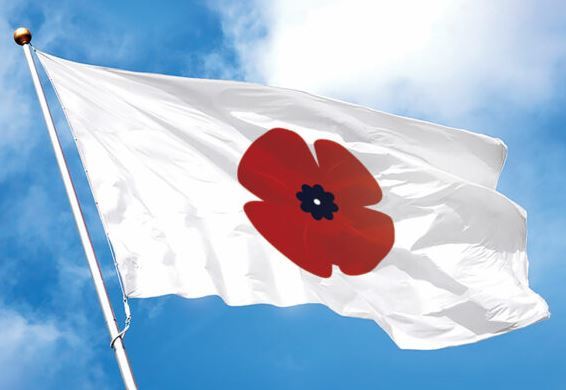 - A Doughboy.shop Exclusive
- Premium, Dual sided Poppy Design
- 5' x 7' Digital Nylon
- Grommets for rigging
- Limited Edition
- Made in USA
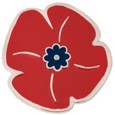 Back In Stock!! - Exclusive Commemorative WW1 Poppy Lapel Pin
- Soft enamel color design
- Approx. 1.5 inch in dia.
- Standard military clasp
| | A great keepsake to commemorate Daily Taps at the National World War One Memorial in Washington, DC. - A Doughboy.Shop Exclusive Commemorative Coin
- The double-sided design showcases the iconic Doughboy Bugler / Poppy design
- Soft enamel color detailing
- Measures 1 3/4″
- Bronze alloy w/ nickel-silver finish
| | 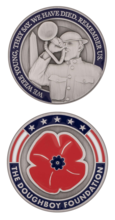 | Proceeds from the sale of these items will help build the new National World War I Memorial in Washington, DC. This and many other items are available as Official Merchandise of the Doughboy Foundation. | | | Willie Edward Richardson 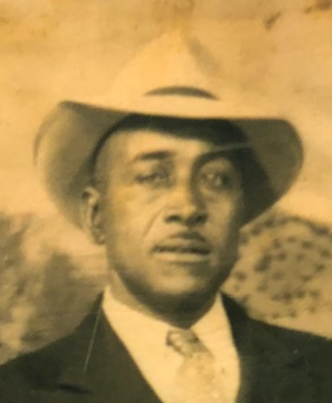 Submitted by: Sherrill Rayford, Ed.D. {Grandchild} Willie Edward Richardson born around April 4, 1895. Willie Richardson served in World War 1 with the United States Army. The enlistment was in 1917 and the service was completed in 1917. Story of Service Memories: Willie Richardson, A World War I Veteran My grandfather, Willie Richardson, was a veteran of World War I, and his experiences symbolize the service and family life of many African American soldiers. Unfortunately, their military service occurred during a period of "nots." They could not eat in certain businesses; they could not live in certain neighborhoods; their service was often overlooked or devalued. Yet, my grandfather and those soldiers defended the world and prospered within limitations. Yet, the invisibility of my grandfather's service seemed invisible in 2018 as I viewed a pictorial display of World War I soldiers in an Arkansas Welcome Center. None of the soldiers in the display looked like my grandfather. Therefore, I contacted the Arkansas visitor's bureau to express that soldiers of color should be commemorated too. The communication exchange was informative and productive as I learned of efforts to find and preserve the service of Arkansas' soldiers of color during World War I.
|  | | | |

No comments:
Post a Comment